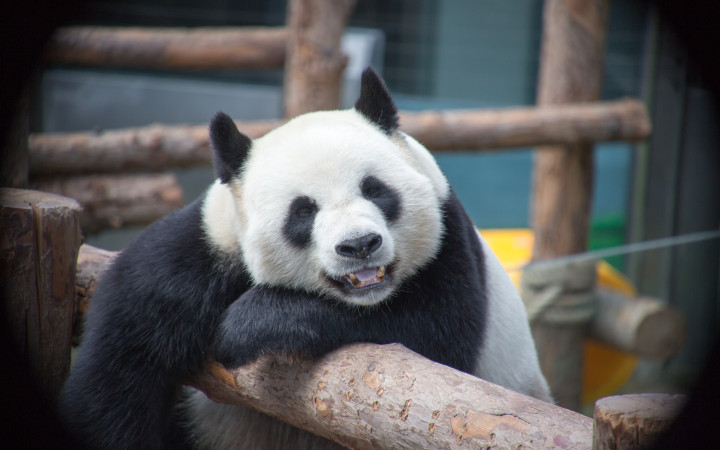Today’s Wonder of the Day was inspired by Quinley. Quinley Wonders, “Are Pandas extinct?” Thanks for WONDERing with us, Quinley!
If you could choose any wild animal or zoo resident to keep at home as a pet, what would you choose? If you're like many kids, you'd soon have a giant panda to cuddle up with at night. But would a giant panda make a good pet?
Sure, they're cute. Who can resist those pudgy bodies and adorable faces? They look so cuddly that you just want to pinch their cheeks and give them a hug. They would be a real chore to take care of, though.
First of all, they eat A LOT. An adult giant panda eats about 12 hours each day. Over the course of that time, it consumes about 20-40 pounds of bamboo. That also means that pandas have to use the bathroom dozens of times a day. That's a lot of clean-up!
So it's probably best to leave the pandas in the wild and in the zoos. Unfortunately, there aren't many pandas left in either place these days.
If you want to see a giant panda in the wild, you'll have to visit the cool, wet bamboo forests of the remote, mountainous regions of central China. You'll also have to be super sneaky, as pandas have an advanced sense of smell that helps them keep their distance from predators — and other pandas.
Giant pandas tend to live a mostly solitary existence. They do search for mates in the spring, and females will give birth to a cub or two in the fall. Unfortunately, the giant panda's birth rate is quite low. Pandas in the wild have only recently been able to begin to replenish their numbers thanks to ongoing conservation efforts worldwide.
Estimates of wild panda populations vary wildly. Some experts believe there are as few as 1,000 giant pandas left in the wild. Other scientists believe there are about 1,600 pandas left. A recent study using DNA analysis, however, concludes that there could be as many as 3,000 pandas still in the wild.
In addition to wild pandas, there are about 250 pandas in zoos, mostly within China. These beautiful, peaceful creatures are adored by millions of people around the world. In their homeland of China, they're considered a national treasure. They have few natural predators. So why are they so rare? Who is their worst enemy?
Sadly, it's us. Human beings are the reason so few pandas roam the forests of China today. In the past, pandas were hunted for their valuable furs. Poaching has declined in recent years, due to new laws and greater public awareness of conservation efforts.
The biggest problem, however, resulted from habitat loss that began in earnest around 1950 when China experienced a population boom. Increased development led to deforestation and farming, all of which drove many pandas out of the lowland areas where they once used to live.
As roads and railroads were built through these areas, the forests the pandas called home became increasingly fragmented. For solitary animals that struggled to mate successfully, mating became even more difficult. Perhaps more critically, destruction of their native forests destroyed much of the bamboo pandas relied upon to survive.
Fortunately, some scientists believe that panda populations are once again on the rise. The Chinese government has opened over 50 panda reserves, which is over four times as many as existed just a couple decades ago. Once listed as an endangered species, the giant panda has recently been upgraded to "vulnerable" status, an indication that conservation efforts are working. With continued conservation efforts, there is good reason to hope that giant pandas will once again rise to the levels that existed in the past.




